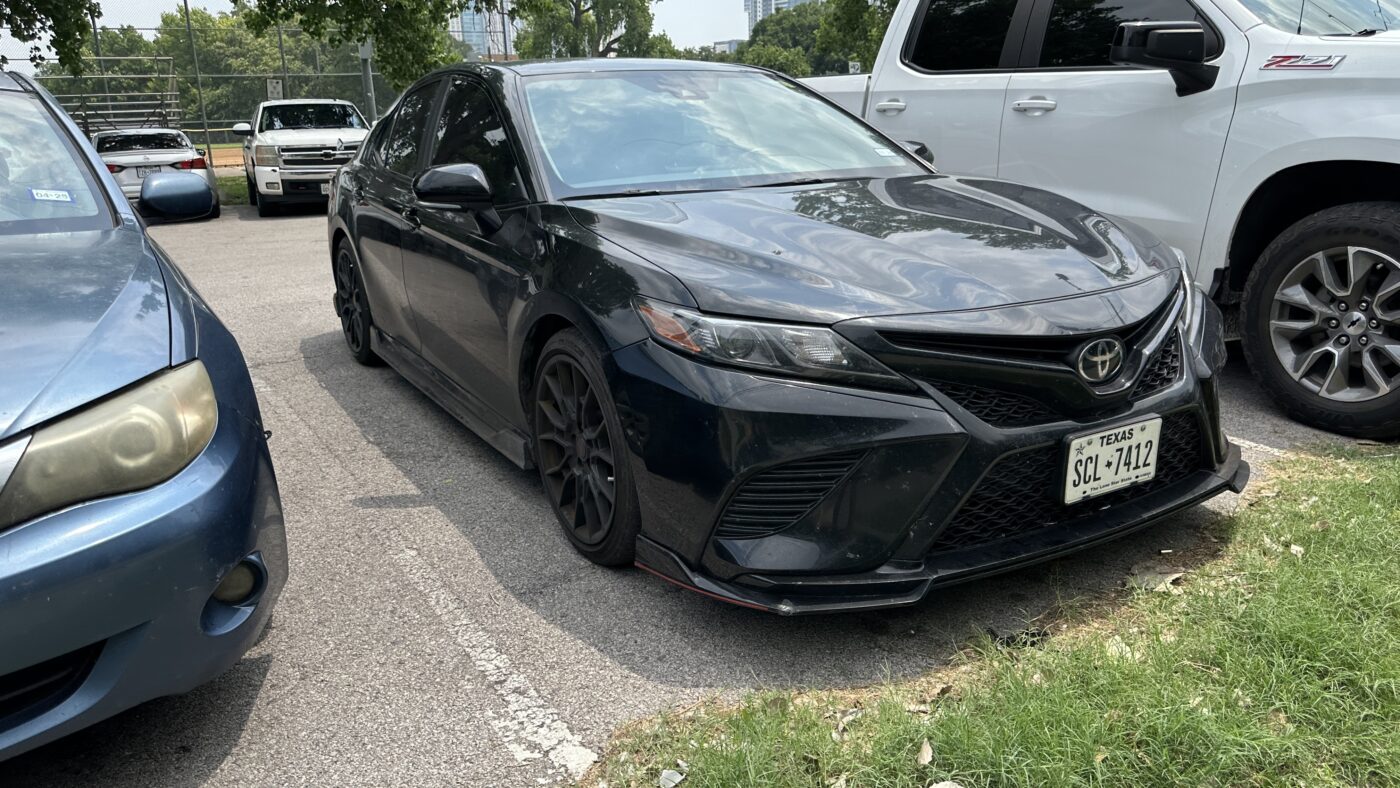The never-ending quest for a car that looks fresh off the showroom floor! We’ve all been there – meticulously washing and waxing, only for some rogue pebble or pesky bird dropping to undo all our hard work. Well, fear not, because that’s where the two revolutionary products come in – Paint Protection Film (PPF) and ceramic coatings.
But choosing between these two car armor options is like deciding between chocolate or vanilla – they’re both great but for very different reasons. On one hand, you’ve got PPF, the tough-as-nails clear barrier that’ll shrug off scratches, chips, and even minor dents like they’re nothing. On the other, ceramic coating brings that just-waxed wet look to the party while magically causing water and gunk to bead up and roll right off.
Still, no product comes with its downsides, so let’s dig a little deeper, and take a closer look.

Understanding Paint Protection Film (PPF)
PPF, also known as a clear bra or paint protection film, is a thin, transparent urethane film applied over your car’s painted surfaces. The installation process involves precisely cutting and wrapping the film around problem areas like the hood, fenders, and bumpers.
Benefits:
- Scratch Resistance: With PPF in your corner, you can wave goodbye to those unsightly scratches and swirl marks caused by road debris or even your ornery neighbor’s mischievous kid.
- Impact Protection: Minor dings from rocks, shopping carts, and other hazards? No sweat! PPF acts as a transparent armor for your car’s fragile paint.
- UV Protection: Arizona sunshine got your paint looking a little, well, crispy? PPF blocks those harmful UV rays, keeping your color vibrant for years to come.
Drawbacks:
- Cost: Let’s be real, top-quality PPF ain’t cheap. Expect to shell out a pretty penny for professional installation, especially on larger vehicles.
- Appearance: While PPF is designed to be invisible, some say it lacks that ultra-glossy “wet look” you get with ceramic coatings.
- Maintenance: PPF requires a little TLC to keep it looking spiffy. That means proper washing techniques and avoiding rough scrubbing.
Understanding Ceramic Coating
If PPF is the muscle, ceramic coating is the beauty queen of car protection. This liquid polymer bonds to your car’s surface at the nanoscale level, creating a super-slick, semi-permanent barrier. Like automotive armor for your armor, if you will.
Benefits:
- Gloss and Shine: Get ready to blind your neighbors with that eye-popping, just-waxed look. Ceramic coatings enhance your car’s depth and clarity like whoa.
- Hydrophobic Properties: Water? Dirt? Bird poop? With ceramic coating, contaminants simply bead up and roll right off your ride.
- Chemical Resistance: From harsh soaps to acid rain, this coating shrugs off environmental nasties like a champ.
Drawbacks:
- Scratch Resistance: While it offers decent protection, ceramic coating can’t match the hardcore scratch resistance of a quality PPF.
- Durability: Even the best ceramic coatings will gradually wear off over time, meaning you’ll need reapplication every 2-3 years.
- Application Process: For maximum protection and that gorgeous finish, ceramic coating is best left to the professionals.
PPF vs Ceramic Coating: A Comparative Analysis
Now that we’ve covered the key benefits and drawbacks of both PPF and ceramic coating, it’s time to go head-to-head. Which one reigns supreme when we analyze the crucial factors like level of protection, cost-effectiveness, aesthetic appeal, and long-term maintenance? Let’s take a closer look and see how these two car protection heavyweights stack up:
Protection Level: Regarding hardcore defense against scratches, chips, and dings, PPF is the reigning champ. But ceramic coating has an edge for repelling water, dirt, and chemical contaminants.
Cost-Effectiveness: Both involve a hefty upfront cost, but PPF lasts longer before needing replacement, making it more cost-effective for the long haul.
Aesthetic Appeal: It’s a toss-up here. Ceramic coating offers that showroom wet gloss look, while quality PPF is virtually invisible.
Ease of Maintenance: Thanks to its hydrophobic properties, the ceramic coating makes washing and general upkeep way easier. With PPF, you need to take care not to rub too aggressively.
Longevity: On average, PPF lasts around 5-7 years before needing replacement, while ceramic coatings start degrading after 2-3 years.
Ceramic Coating Protection For PPF & Vinyl
Of course, why choose when you can have both? Companies like Feynlab® offer products that can be applied on top of your PPF & Vinyl coated vehicles. This dual-layered system combines the superior impact protection of PPF with the hydrophobic, glossy qualities of ceramic.
Packed with their latest ceramic tech and designed specifically for films, their coating for PPF & Vinyl amps up durability, boosts that glossy factor, and adds a water-repelling property while shielding your car against UV rays.
On top of that, here’s more about what can you expect from their product:
- Dual Protection: Get the best of both worlds with maximum resistance to scratches, chips, and environmental contaminants.
- Extended Warranty: Feynlab confidently backs its coating with a generous 10-year warranty.
- Ease of Application: While professional installation is recommended for full coverage, Feynlab’s DIY kits make it doable for the ambitious weekend warrior.
The Best Car Protection is What’s Best for You
There’s no one-size-fits-all solution for car protection. It comes down to your priorities: hardcore scratch/chip prevention, easy cleaning, and glossy looks, or a hybrid approach.
For the ultimate defense, go with PPF – just be diligent about maintaining that glossy finish through proper washing methods. Ceramic coating is a clutch for repelling water and contaminants while boosting that drool-worthy gloss factor. Or skip the tough choice and check out Feynlab’s multitasking fusion product.
Whichever route you go, the key is assessing your car’s needs and investing in quality protection. After all, that fresh-off-the-lot look is worth defending.
Facebook Comments